|
Monday, September 19, 2011
Progress Notes
A couple of months ago Chester Setser of Eldon drove up to our museum in his bright red 1989 Corvette to give us some very interesting records pertaining to his Setser and Flaugher ancestors (photo 01).
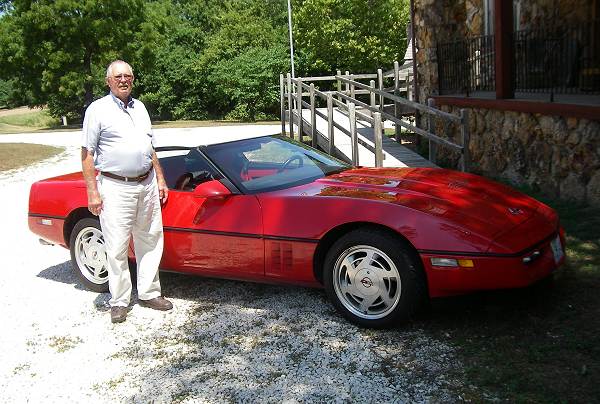
01 Chester Setser and his 1989 Corvette
Chester was raised about seven miles south of Tuscumbia on a farm on Highway 17. His father, also named Chester, operated a small grocery and service station right on the highway across the road from where Ralph Hendley’s farm and feed store is located today. The first store burned but Chester’s father rebuilt a second store which also offered gasoline service (photo 02).
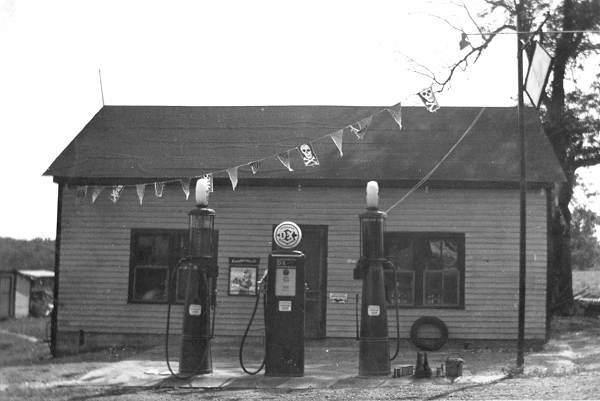
02 Chester Setser Store - Highway17
The store no longer is standing currently.
Chester, who was an over the road truck driver for many years, now is retired. But he has spent much of his time in recent years delving into his Flaugher and Setser roots. Unfortunately, his father passed away early in life at the age of 38 from acute appendicitis. Chester has one photo of his father taken one day when he and his sister Lorene were horseback riding (photo 03).
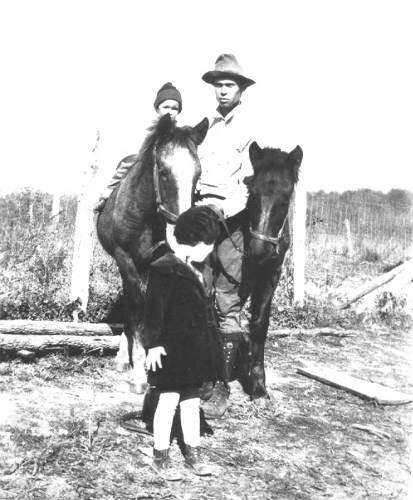
03 Chester Wayne Setser on horse, Chester Setser and Lorene Setser
His mother Mona, was a Flaugher, sister to Wade and Brice Flaugher and daughter of Charles P. Flaugher. Here is a photo of Chester and Lorene with their mother Mona taken at the farm many years ago (photo 04):
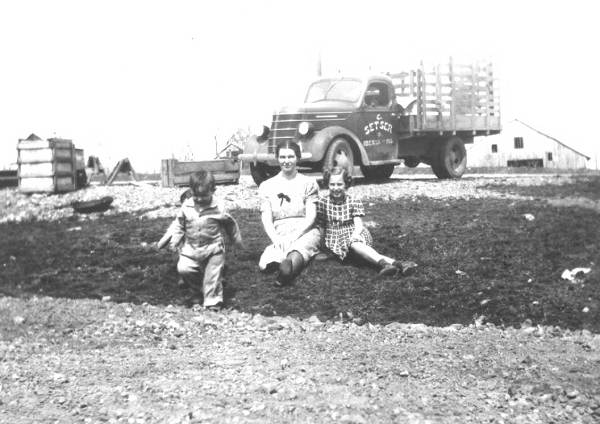
04 Chester Wayne, Mona and Lorene Setser
Here is another photo of some of Mona’s family including her father Charles and brothers Wade, Brice and Guy (photo 05):
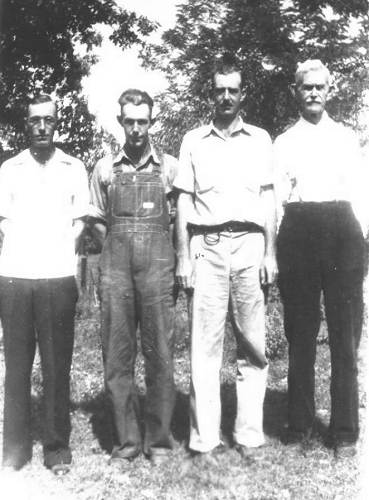
05 Brice, Wade, Guy and Charles P. Flaugher
And another photo Chester has is of his grandparents Charles and Malinda Flaugher (photo 06):
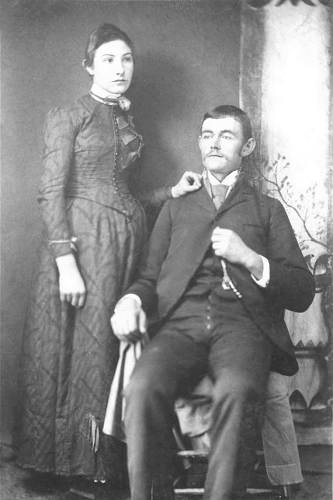
06 Malinda and Charles Flaugher
Charles’ home, no longer standing, was located a couple miles west of Mt. Zion Church near Sandrock Road (photo 07).
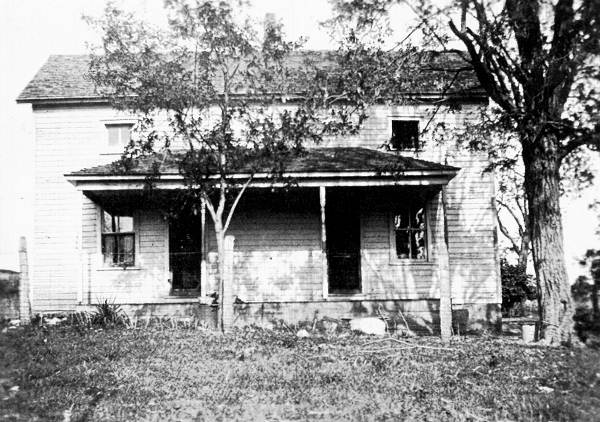
07 Charles Flaugher Home - Two miles west of Mt. Zion Church
Charles Flaugher was the son of James Monroe and Elizabeth Varner Flaugher, some of Miller County’s earliest settlers (photos 08 and 09).
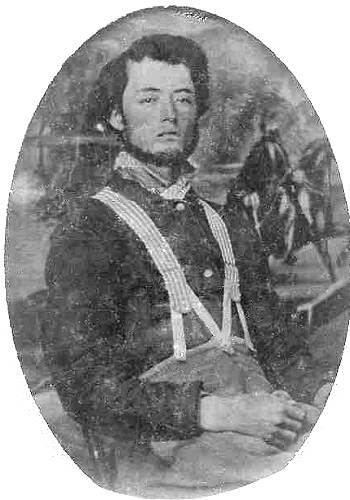
08 James Monroe Flaugher, Son of Frances Flaugher
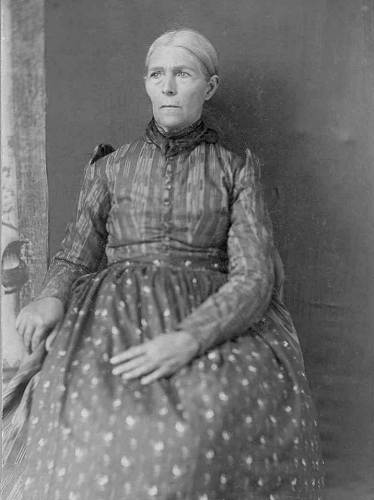
09 Elizabeth Varner-Flaugher
James was the son of Francis Gaines Flaugher about whom Peggy Hake has written a detailed narrative. You can read it here (photo 10):
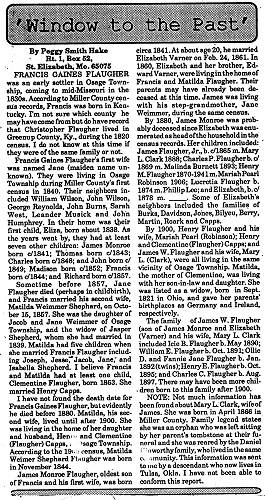
10 Flaugher Family History
Click image for larger view
Just as Chester has deep Miller County roots from his mother’s Flaugher ancestry, so does he also on his father’s Setser’s heritage. Peggy Hake has written an extensive narrative about the Miller County Setsers with accompanying photographs on our website.
Johnny Setser, father of Katherine and Jerry Setser, was a first cousin to Chester’s father, also named Chester. Here is a photo of Johnny Setser’s family (photo 11):
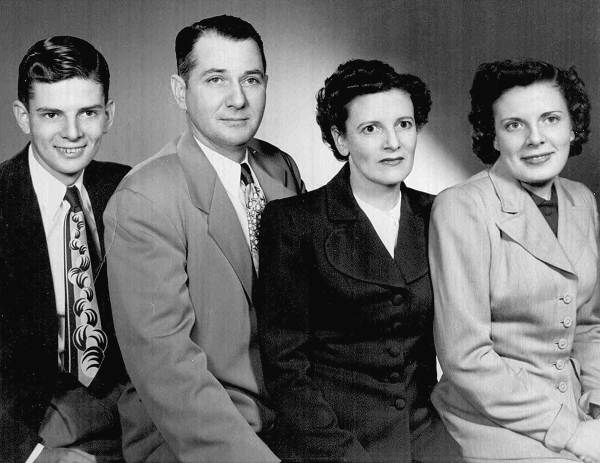
11 Jerry, Johnny, Ruth Burd Setser and Kathryn Setser
Not only has Chester been kind enough to donate several historical documents to our museum but also he has donated items from his collection of old farm tools. Nancy Thompson, museum director, and I visited Chester’s home a few weeks ago to receive several items for our museum donated by Chester. Here are some photos of Chester and his antique collection (photos 12 - 15):
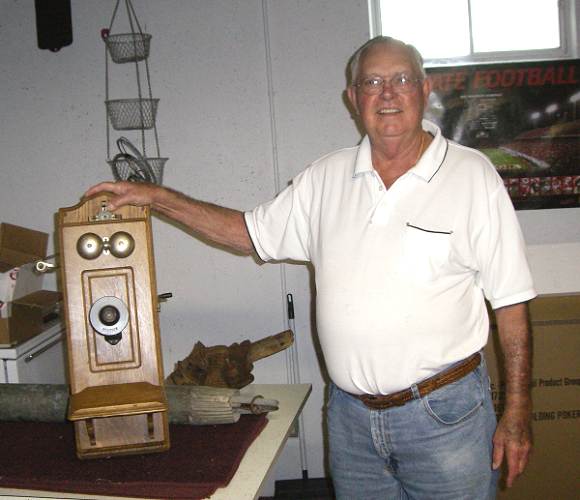
12 Chester's Original Telephone
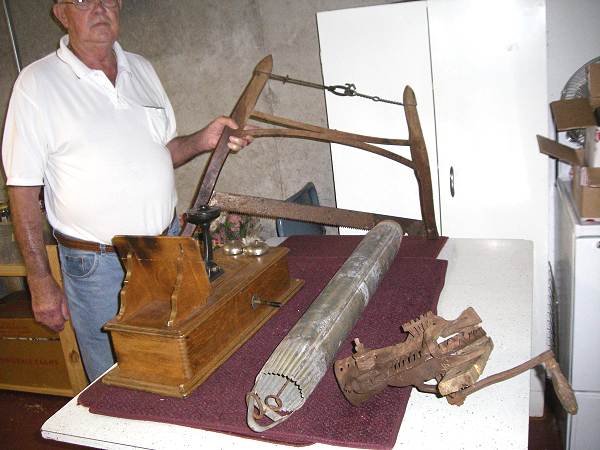
13 Two Man Saw, Well Water Retriever and Grinder

14 Assorted Tools
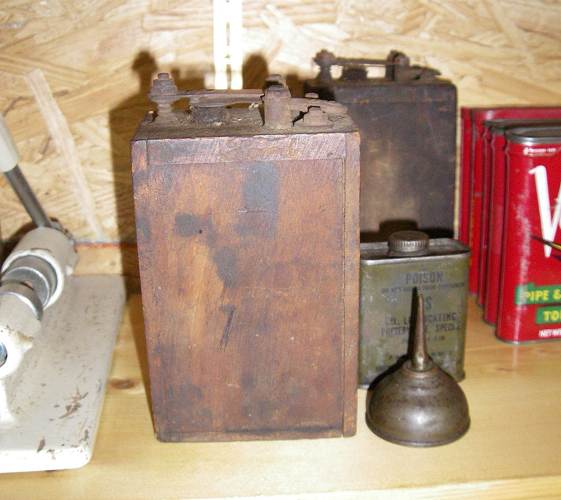
15 Old Battery
A few months ago Harold and Joy Flaugher of Eldon began volunteering at our museum (photo 16).
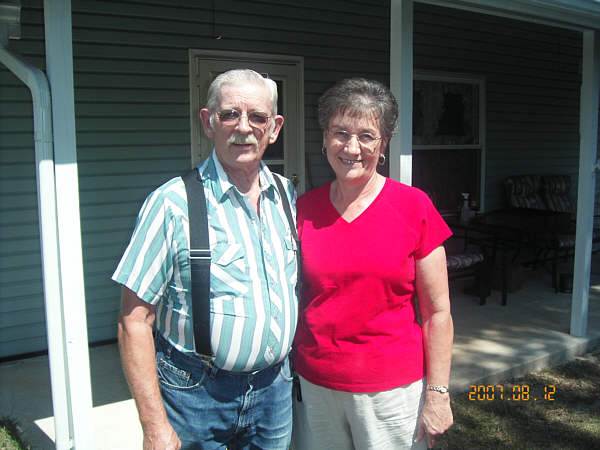
16 Harold and Joy Flaugher
Harold was born and raised in Tuscumbia and Joy is from Iberia. I previously featured Harold and Joy in the Progress Notes of August 12, 2007.
Harold is a wood working craftsman who specializes in fiddle repair and construction. Here is a recent photo of Harold playing a fiddle on the porch of the Lupardus cabin at the museum in Tuscumbia (photo 17):

17 Harold Flaugher
For many years he and Joy lived in Kansas City where Harold was a union carpenter. Joy, who has extensive administrative experience working for the state in Jefferson City, is an expert quilter as well. Harold has been invaluable to us for repairs and maintenance requiring the skills of a carpenter and Joy likewise has much to offer regarding her skills of organization for our library.
Harold is a third cousin of Chester Setser through their common ancestor, James Monroe Flaugher Sr., mentioned above (see photo 08 above).
Harold’s father, Elmer Flaugher, who was a grandson of James Monroe Flaugher Sr., was a blacksmith and boat builder in Tuscumbia for many years. His mother was Edith Clark Flaugher, daughter of Edward and Sarah Boyd Clark (photos 18 and 19).

18 Elmer Flaugher
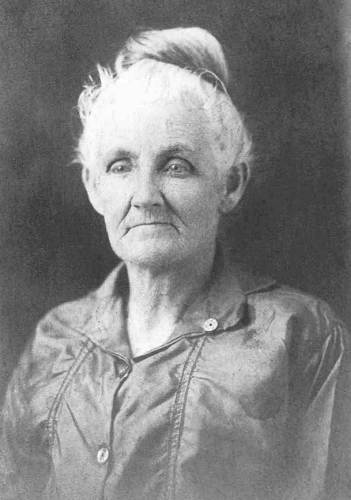
19 Edith Ivy Clark Flaugher, Daughter of Edward Clark and Sarah Boyd
Elmer trimmed and shoed horses for me when I was a teenager living in Tuscumbia. He also built the John boat which was used by Twentieth Century Fox Movie company when it filmed the movie “Glory Brigade” in Tuscumbia back in 1952. The boat was used by technicians who wired the pontoon bridge to ignite explosives which destroyed the bridge which was one of the highlights of the movie (photo 20).
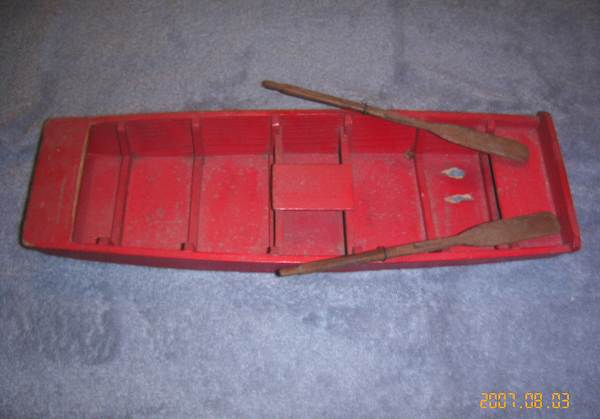
20 Miniature copy of John Boats made by Elmer Flaugher
Elmer was a tie hacker and participated in tie hacking contests at the Riverside Park in Tuscumbia (photo 21).
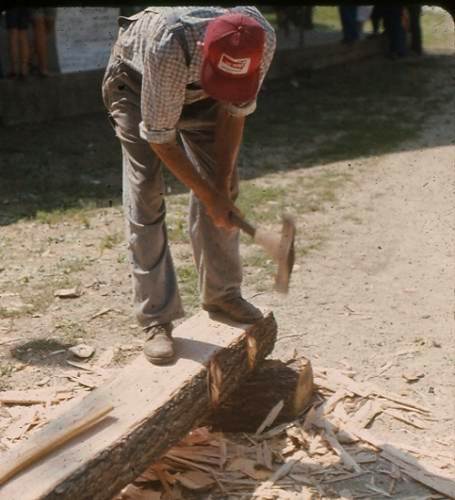
21 Elmer Flaugher at Tie Hacking Contest - Tuscumbia 1976
In addition Elmer was a fiddle player too (photo 22).
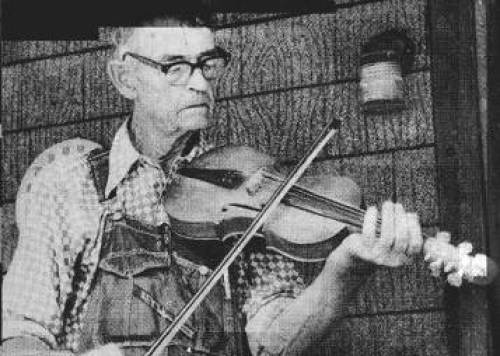
22 Elmer Flaugher - Fiddler
He sold me one of his fiddles many years ago in 1962 for twenty five dollars which I still possess (photos 22a and 22b).
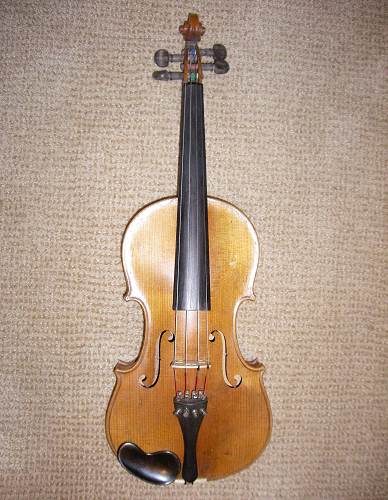
22a Elmer's Fiddle
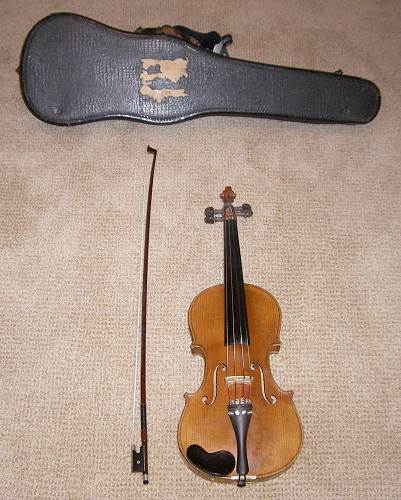
22b Elmer's Fiddle with Case and Bow
The fiddle is very old, I don't know how old except to say that it has a rattle snake tail inside it. Putting a rattle snake tail in a fiddle was a long ago custom of fiddle makers in the past because of the superstition of evil associated with fiddles. The rattle was thought to have powers that kept the Devil away. Notice also the old time wooden tuning pegs on the fiddle. I am going to donate the fiddle to our museum so you can look at it next time you visit.
Elmer’s son Barney, brother to Harold, was a whittler. We have a display of Barney’s whittling at the museum (photo 23).
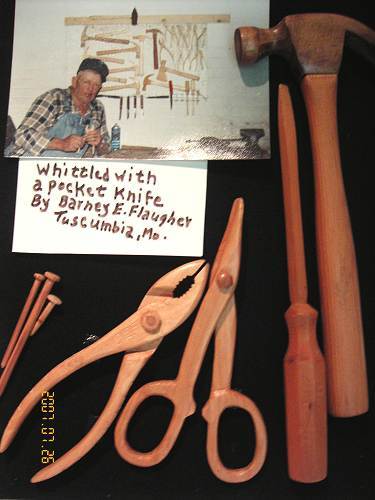
23 Barney Flaugher - Whittler
Elmer’s brother, Charlie Flaugher, also was a whittler (photo 24).

24 Charlie Flaugher Article
Click image for larger view
The Miller County Flaugher family, being one of the earliest to settle here, has a long genealogy which Nancy Thompson, our museum director has worked out. You can read it here (photo 24a):

24a Flaugher Genealogy by Nancy Thompson
Click image to view complete document in PDF format
I really can’t end this narrative about the Flaugher family without mentioning my good friend, Larry Dave Flaugher, grandson of Brice Flaugher, who was a sister to Mona Flaugher, mother of Chester Setser featured in the first narrative of this week’s Progress Notes. Larry is one of Miller County’s most enthusiastic supporters. Even though he has a career which takes him out of the area most of each week, he still has time to volunteer for the organizing committee for the Eldon fair as well as chairing the Tuscumbia Alumni Association. He also is involved with organizations supporting handicapped children. All these positions require much in the way of time and work for Larry when he is home. Just last week he was the director of the “Pig and Pickle” festival at Tuscumbia to raise funds for several organizations as well as for obtaining new signs for the north and south highways leading into Tuscumbia. Last year, Larry was the organizer of the new bridge opening ceremony at the Riverside Park in Tuscumbia. Here is a photo of Larry I took of him the day we were the last ones to cross the old bridge over the Osage River before it was closed to traffic (photo 24b):
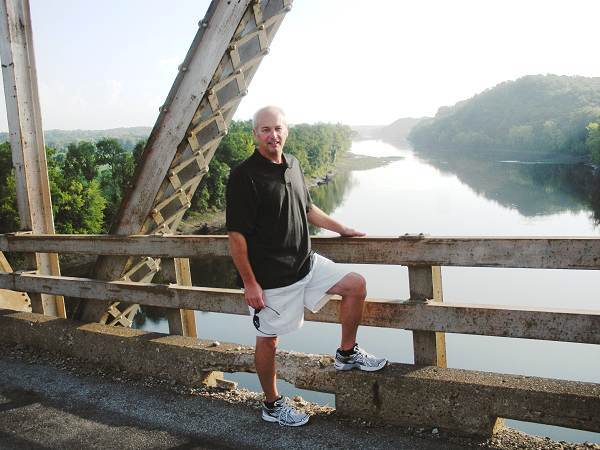
24b Larry Flaugher
You can read about that day at this previous Progress Notes.
Another person who volunteers often at our museum is Helen Heafy Schulte (photo 25).
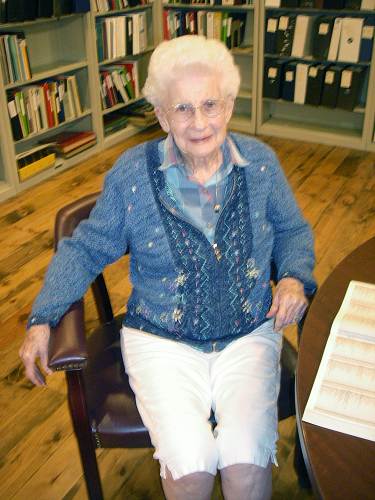
25 Helen Heafy Schulte
Helen was one of the early members of the Miller County Historical Society joining in 1983, four years after it was organized. She has been a board member several times in the intervening years and now at the age of 93 is recognized as a “board member emeritus.” I have known her all my life; she was my sixth grade school teacher. Helen attended Tuscumbia High School about the same time frame as my parents. She still lives on the Heafy family farm where she was born. She is from one of Miller County’s historical families which I featured at this previous Progress Notes.
Helen devoted her life to the career of teaching. Here is a synopsis she wrote of her teaching career which I copied from the above website:
“I spent my career in the teaching profession first beginning at Skinner one room school where I taught three years. From there I went to the Sanning one room school near Mary’s Home teaching for five years followed by Central Grade School in Kansas City, Kansas for one year. I returned to Miller County the next year to teach at Tuscumbia grade school for six years. After that I taught in the Eldon school system for two years following which I and Leonard moved to Columbia. I taught for twenty years in the Columbia School system from which I retired. My last year of teaching, 1981, I was nominated for teacher of the year by the Columbia School System. I still loved teaching but thought after thirty seven years it was time to move on to something different with my life.”
The Sanning School where Helen taught was one of more than one hundred one room schools which were present in Miller County up until consolidation occurred in the early 1950’s. We have a complete section of our website devoted to the early county schools which includes a list of the one room schools.
Few of the old one room schools have had much history written about them and for many of them we cannot even find photos. However, we are fortunate that the Sanning School history has been compiled in a book in a very complete manner by Jean Berendzen Pingenot (photo 26).
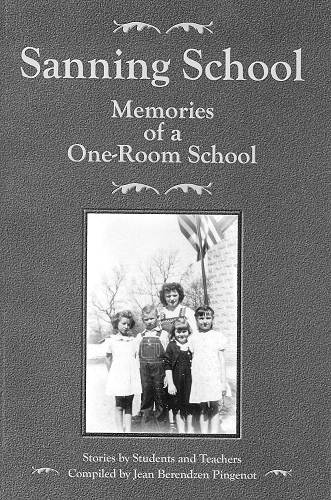
26 Sanning School Book
Ms. Pingenot donated a copy of the book to our library. She begins the book with a short history of the Mary’s Home community near where the Sanning School was located, and then continues with the history of the school itself. Below are excerpts about the Mary’s Home community and the Sanning School written by Ms. Pingenot:
The Mary’s Home Community
Jean Berendzen Pingenot
The Mary’s Home community is located in Miller County, Missouri. It is about twenty five miles south of Jefferson City, the State Capitol. The Our Lady of the Snows Catholic Church centennial book, published in 1983, states, “There is a closeness in Mary’s Home that has been present for the past one hundred years and can only be described as a neighborhood spirit. This same spirit has allowed the people to feel they are bound together as one large family.”
The area is in the northern reaches of the Ozarks. Much of the community is located in a large curve of the Osage River. It is a very hilly area, with forests of oaks, walnuts, hickories, cedars and numerous other varieties. The upper flat lands have open fields and farm lands. The river valley has fertile fields and crop land.
The first settlers into the Mary’s Home community were known as tie hackers, according to stories my father, Adolph Berendzen, heard as a boy. They would cut down the trees, cut them into 8 foot lengths and hew them with a broad axe into railroad ties. These ties were hewn into different sizes, some 8 feet by ten feet, seven by nine feet, or six by 8 feet. After they were hewn they were dragged to the river, put into the water one after another and nailed together, using split willow saplings 2 inches to 3 inches in diameter, forming a raft. They could nail as many as 250 to 300 into a large raft and float them on the Osage to the Missouri River and on to St. Louis where they were sold. They were placed on the ground to support the steel rails that the trains ran on.
Note: William Berendzen, grandfather of Adolph, was one of the early settlers of Mary’s Home (photo 27).
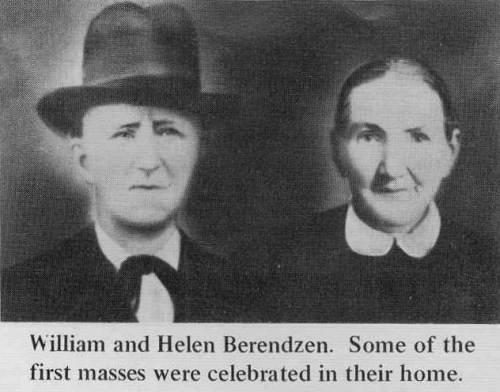
27 William and Helen Berendzen
About 1870 several young German families from the Taos area, which was near the Osage River in Cole County, were looking for farm land. They ventured up the Osage River and settled in the Mary’s Home area. English speaking families also settled in the area, so the community was a mixture of German and English languages and Catholic and Protestant religions.
Bob Morgan had a saloon, and there was also a blacksmith shop to serve the tie hackers in the area. The saloon was a log building about twenty feet square. Local people called it Bobtown (photo 28).
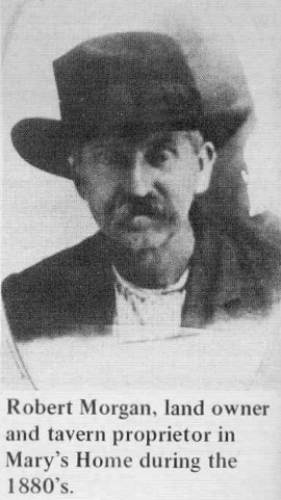
28 Robert Morgan
An account of naming the settlement is given very colorfully in the Our Lady of the Snows Catholic Church centennial book. The town of Mary’s Home was originally to be given the name “Morgan” when in the 1880’s early settlers in the area were petitioning the government for a post office. Robert Morgan, a local tavern proprietor and land owner, was honored by this suggestion; however, Father Cosmas Seeberger, priest of the parish, was outraged at such an idea (photo 29).
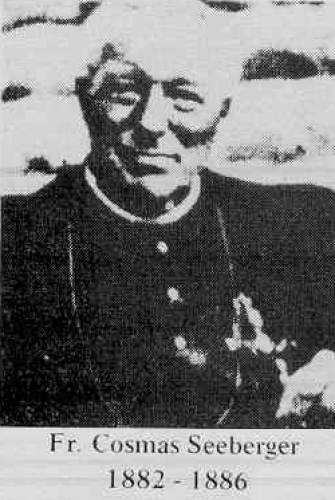
29 Father Robert Seeberger
In his sermon Father Seeberger stated: “I founded this place; there was nothing here before I came. And now, without so much as a whisper to me, your pastor, you have taken this matter into your own hands and named this post office after a Protestant, a Yankee and a saloon keeper, while as a founder of the place, I have the right to give it its name. This town belongs to the Mother of God, and its name shall not be “Morgan,” but “Mary’s Home.” What, do you imagine, does your Mother think of this act of infidelity? See to it that this wrong is righted at once.” Needless to say, the name on the petition was immediately changed and the town officially became known as Mary’s Home.
When Father Seeberger first ventured into Miller County in the early 1880’s he found a rough, wooded region that was sparsely settled by people of predominately German background. Few fields had been cleared and the roads were little more than muddy cow and mule paths. The early settlers that Father Seeberger encountered traveled solely by foot, by mule, or by boat on the Osage River.
The nearest post office is at the town of Eugene, about six miles from Mary’s Home. The county seat is Tuscumbia. Farming was the occupation of the families of the Mary’s Home area during the era of Sanning School.
Often in German communities the schools were conducted in the German language. In the Mary’s Home area the language used in schools was apparently always English. Probably that was because the earliest teachers and students were English speakers.
Besides Sanning School and Mary’s Home School, other one room schools in the Mary’s Home community were Kempker School, Jim Henry School (photo 30), Pleasant Ball School, also called Klindt School, and Teal Bottom School.
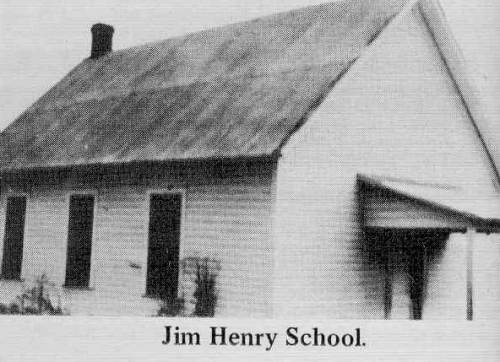
30 Jim Henry School
The second narrative I have copied from Ms. Pingenot’s book is the history of the Sanning School:
Sanning School
Fairview School, District 34, was the official county name for what was locally called Sanning School. Records showing the date that the first school was built have not been found, but records show the first teacher was in 1874, so that may be shortly after it opened. It was a log building as pictured here (photo 31).
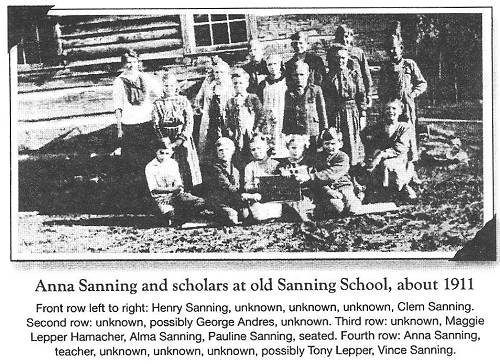
31 First Sanning School
Click image for larger view
The school was on the Lepper farm in the Sanning neighborhood, along the lane between the Lepper house and the county road. It may have been called Lepper School for a while. During the 1880’s four Sanning brothers, Frank, Bill, Ben and Jake, and their young families settled on farms along the Osage River. The neighborhood was called the Sanning neighborhood, and that was probably the reason for the school to be called Sanning School.
Note: You can read more about the Sanning family on our webstite.
The first Sanning in the area was John Sanning (photo 32).
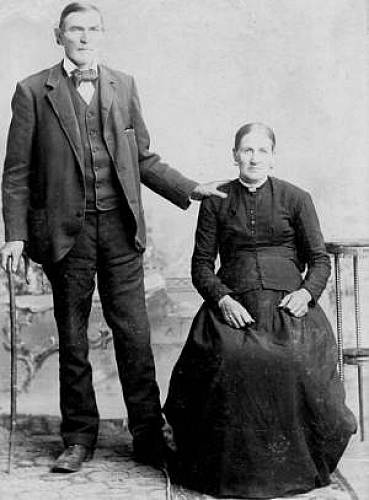
32 John and Adalaide Bruenning Sanning
P. J. Sanning built the country store in Mary’s Home which is still standing (photo 33).

33 P.J. Sanning
Around 1916 a new school was built using large concrete blocks that gave the appearance of stone blocks. It was at a different location, but on what was probably part of the original Lepper farm (photo 34).
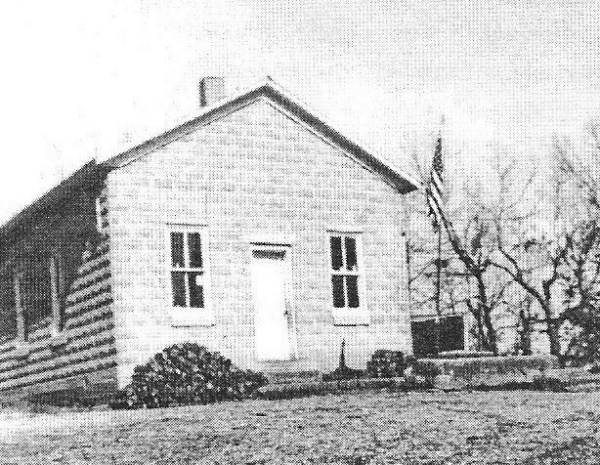
34 Second Sanning School
According to Fred Lepper, the land was owned by Frank “J.R.” Lepper. It sat in a clearing on a hill at the end of a lane from the county road. It was about four and a half miles from Mary’s Home on what is now known as Old Ten Mile Road.
The children walked to school on well worn paths through woods, pastures, fields and on gravel roads, and some lived two or three miles away. A set of steps, called a stile, was built on some fences so the children could get across more easily. Cub Creek ran through the Lepper farm, and since the creek drained a large area it sometimes flooded after a rain. Some farmers built swinging foot bridges high enough for the children to cross the creek. Some children were taken across the high water on horseback. In spite of distances walked in inclement weather, many children received prizes for perfect attendance at the end of the school year. Bud Hake, father of two of the students, converted a van and started bus service about 1940.
The American flag was raised on a flagpole each morning that weather permitted. It stood at the edge of the low retaining wall in front of the school. Many mornings we gathered in a large circle around the flag and said the Pledge of Allegiance.
Only one teacher taught all the students in first through eighth grades. Teachers had only blackboards and pull down maps as aids, so they had to rely on their own innate ability to teach the necessary material. Teachers sometimes played games with the students at recess or sat outside and talked with students, but often they kept busy at their desks. They were always ready to spend time with a student who asked for extra help.
A good explanation for the seats comes from “Yesterday in the Texas Hill Country” by Gilbert J. Jordan. “Our desks and seats in school were the old fashioned two passenger variety. Boys and girls always paired off separately. The front part of the unit was the seat, and the back part was the desk top for the seat behind. Under the desktops were compartments for books and school supplies. One drawback to the double desks was that there never was enough space for two kids, but a worse problem was the strange coincidence that the pupils in front invariably wiggled just when we were doing our penmanship or art, and as a result our penmanship took on a scribbled effect and our art, a doodled look. The larger desks for the older pupils were in the back, and from there the desks got smaller toward the front in stair step fashion. The longer you stayed in school, the farther back you were promoted.”
The “library” was a bookcase full of books, and during the last few years there were monthly visits from the Cole County bookmobile. “Drama” was a Christmas or last day of school program of short one act plays, poetry recitations and singing. “Music” was weekly singing from the Golden Song Book such songs as “America the Beautiful,” “My Country ‘Tis of Thee’,” “Yankee Doodle,” “Dixie,” “Old Black Joe,” “Old Folks at Home,” “Aunt Rachel,” and “My Bonnie Lies Over the Ocean.” A special treat was when teachers would read aloud a favorite or new book, one or two chapters a day, to the students.
Those were days of learning by memorization and recitation. Students memorized all the states and their capitals. Poems were memorized and recited. Addition, subtraction, multiplication and division “facts” were memorized and drilled until we could answer without thinking about it. Probably a few students would agree with Gilbert Jordan who wrote, “In our mathematics courses there was definitely no ‘new math.’ We memorized our multiplication tables, recited them and wrote them many times. We added and subtracted our way through a whole series of dull books in the usual old fashioned way.”
Playtime, or recess, was not structured, so the children decided among themselves what games or activities to play. There were no swings or playground equipment. In the earlier days the students had to make their own bats and balls. During the 1940’s some bats and balls may have been provided, but the boys brought their own gloves if they had them. Sometimes all the students played softball. Teams were formed with all the kids chosen; the little kids learned to play ball and the older ones learned to be tolerant.
Water was provided by a well. Washing hands was done outdoors before lunch. One or two older students poured water over the hands of the students and soap was lathered, then the hands were rinsed and dried. Electric lights were brought to the school in 1949 when the neighborhood was connected to the electrical grid; however, running water was never brought inside the school.
The school closed in 1950. All the neighborhood schools in the Mary’s Home community were closed and students went to Mary’s Home School. The physical properties were sold at an auction. Stanley Morgan bought the school building and moved the concrete blocks to the Morgan home. Years later some people said those blocks were used to build the handicapped addition to the Catholic Church in Mary’s Home.
Helen Schulte, whom I noted above, was one of the Sanning School teachers. She wrote a short narrative of her time there which which was included in the Sanning School history book written by Ms. Pingenot:
Helen Heafy Schulte (photo 35)
Sanning School teacher 1939-1944

35 Helen's photo at Sanning
In August 1939 I began teaching at Sanning School. I don’t remember fixing up the room, like we do nowadays or getting ready. We just started school. Perhaps someone cut the weeds that had grown up during the summer.
There was this little stone block one room school house about five miles south of Mary’s Home which was set back off the road on a dead end trail that led from the road. Now it is called South Ten Mile Drive, I believe.
I remember my sister, Clara, leaving me off at the school house, with my cardboard suitcase with a few clothes and my lunch, before she returned to our home located between Eldon and Tuscumbia.
After school I was to room and board with Herbert and Maggie Hamacher and their daughter, Martha. I truly felt abandoned, but all that soon changed when a small bus with Bud Hake as driver arrived, with the many smiling and anxious faces, unloaded and almost immediately became my loving kids for the next eight months. They were all smart and eager to learn. They were children from families such as Kempker, Schulte, Hake, Berendzen, Bungart, Mormann, Berhorst, Hamacher, Limbach, and of course, Sanning. They didn’t know me nor did I know them but that was not a problem as they were all well behaved and knew what school was about.
The building consisted of one big room and a small cloakroom where we left our lunches, coats, drinking water, and firewood.
Thanks Helen!
A couple of weeks ago the Advertiser and Autogram published the news of the sale of the Pryor Novelty Company’s buildings and property located next to the Courthouse in Tuscumbia to Miller County (photo 36).

36 Last week, Miller County acquired the last of the old Pryor Novelty Company in Tuscumbia,
including the two buildings on the right and one behind them. The building partially visible in the left
background was previously purchased from Tim and Carla Pryor by the county, along with an area
in front of it used for spill over parking when needed. The area in the right front corner is not part of
the purchase and is owned by a title company. The courthouse-jail complex is to the left of this view.
Photo by Ginny DuffieldHere is a copy of the story written by Vernon Publishing Company reporter, Ginny Duffield:
Despite a struggling economy and tight budgets, the Miller County Commission has done something it has long hoped to do – purchase the old Pryor Novelty property on Highway 52 next to the new courthouse and jail.
The county previously acquired part of the property and has used it for parking and an old lumber shed was used for storage. Anticipating that eventually Tim and Carla Pryor would sell the property, the commission had put back money for the purchase in this year’s budget. Cost of the property was $40,000 plus enough to retire back taxes on the property, Presiding Commissioner Tom Wright said. “We finally got that all settled,” he said. Wright said he knows it is hard to justify spending the money given the county’s budget constraints. “We need parking right now on some days,” Wright said.
The other large factor was the fact that eventually the courthouse and jail will need to be expanded. The Pryor property gives the county room for that, Wright said. Other than parking, Wright said there are no immediate plans for the property or the buildings on it. An engineer will examine the structures to determine what needs to be done to insure they don’t deteriorate or if some demolition would be advisable, Wright said.
The back building would be better for storage than the lumber shed now used because it has a concrete floor and can be secured, he said. Eventually, the county probably will move the University of Missouri Extension office to the courthouse site, perhaps utilizing some of the building space on the Pryor property, he said. That would allow the county to sell the old courthouse annex near the old courthouse, which has already been sold.
“We (the commission) are certain that will be a big plus for the county,” Wright said about the purchase.
Not included in the purchase is a tract along Highway 52 between the east courthouse drive and the western most novelty company building. It was previously sold to a title company which has not yet developed the site.
Since my father was one of the three brothers who started the cedar wood craft and novelty enterprise in Tuscumbia in 1937, I experienced a personal sense of nostalgia while reading the article written by Ginnie. The cedar craft woodworking industry began as an off shoot of the arrival of many tourists who began coming to this area to take advantage of the recreational opportunities offered by the Lake of the Ozarks, which was created in 1931 by the building of Bagnell Dam. Aromatic red wood cedar, native to this area, was easy to work with and provided a luster very beautiful after the application of lacquer. The tourists who came here were eager to purchase something unique to the area. Also, they were particularly fascinated and intrigued by the idea of coming to an area where they might meet a “hillbilly,” something my uncle Ansel Pryor realized when he discovered that the most popular item purchased by the tourists actually was not made of cedar but of ash and was a miniature outside toilet he had made. This was a popular item sold by about every store at the strip on the south end of the Dam (photo 37).
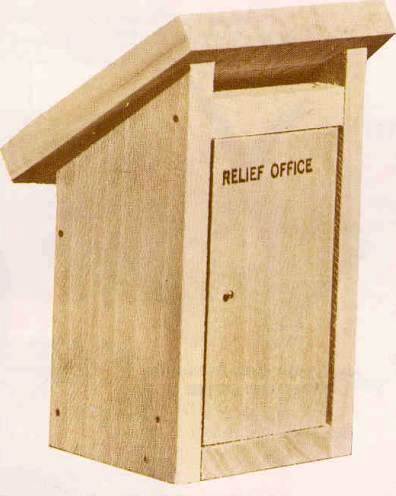
37 Outdoor Toilet Souvenir
You can read more of that story at this previous Progress Notes.
I previously had written about the Pryor Novelty Company at these three previous Progress Notes:
- October 8, 2007
- December 15, 2008
- September 13, 2010
Eventually, other local entrepreneurs began to have success selling cedar wood souvenirs to tourists in this area including those wood working shops owned by the Brockman, Blair, Raynor, Deere, Stanton, and Kraml families. I have written about all these families and their cedar souvenir business in past Progress Notes:
- Kraml
- Stanton
- Brockman
- Raynor
- Deere
- Blair
As the years have passed cedar wood souvenirs no longer are as easy to sell due to manufacturing and labor expenses as well as competition from the many other types of souvenirs which can be sold at less cost due to their manufacture overseas. Today, I know of only two cedar wood souvenir crafting businesses in the area, those owned by the Blair and the Stanton families.
That’s all for this week.
 Joe Pryor
Previous article links are in a dropdown menu at the top of all of the pages.
|

